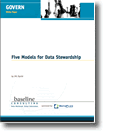Galaxies could be twice as bright if not for a lot of dust
By William Atkins
Friday, 16 May 2008 07:18
Interstellar dust is made up of tiny grains of carbon, silicates, and other such materials, some only a few molecules (others less than a millimeter) in length. They are generally found in the vicinity of galaxies, mostly on the outskirts and not near their centers.
For many years astronomers have been arguing as to just how important interstellar dust is to the ability of light from distant galaxies to reach Earth. Most scientists have thought that interstellar dust is very minor is the ability of our telescopes to see galaxies far out into space.
However, according to Scottish astronomer Simon Peter Driver (University of St. Andrews) and his international team of researchers, astronomers in the past have vastly underestimated the importance of interstellar dust in observing stars, galaxies, and other objects in outer space.
Previously, astronomers had roughly estimated that interstellar dust blocks about 10% of light coming from celestial bodies that give off radiation. That is, dust dims down the real brightness of galaxies by about 10%, what is then called intrinsic brightness, or brightness as seen on Earth.
Specifically, intrinsic brightness, sometimes also called absolute magnitude, is the brightness of a celestial body, such as a star or galaxy, as it would appear without any interstellar dust in the Universe and without regards to the various distances that such objects may be away from us.
However, the Driver team found something unexpected when they looked at the intrinsic brightness of galaxies and interstellar dust.
To better decide just how important interstellar dust is in being able to observe distant galaxies in the Universe, the Driver team studied about ten thousand galaxies using data from the imaging survey called the Millennium Galaxy Catalog.
The data had been collected using the Isaac Newton Telescope and the Telescopio Nazionale Galileo (both at La Palma, Spain), Anglo-Australian Telescope (Epping, Australia), the Australian National University telescope (Canberra, Australia), and the Gemini Telescope and ESO New Technology Telescope (both in Chile).
The galaxies within the Catalog were classified as either facing Earth or tilted 90 degrees away from us. Galaxies that were face-on to Earth show their top or bottom (kinda like showing the top or bottom of a deep-dish pizza), while edge-on galaxies show their sides (much like seeing the side of the pizza crust--we see the crust but not much of the meat and cheese).
Thus, since most dust is found in the outer parts of galaxies (near the crust), and not near their center (in the middle where all of the sausage and cheese lies), the researchers reasoned that they would be see fewer edge-on galaxies than face-on galaxies if dust was a major factor in the ability to see galaxies—because the dust would more likely hide all of the galaxy when viewed from the side than from the top or bottom.
If, on the other hand, dust was not a major factor, then each type of galaxy would be equally able to be viewed.
When the researchers counted both types of galaxies, they found 70% less edge-on galaxies than face-on galaxies.
So, the dust was a factor.
But, how much was it a factor? The result surprised Driver and his team. Read on.











